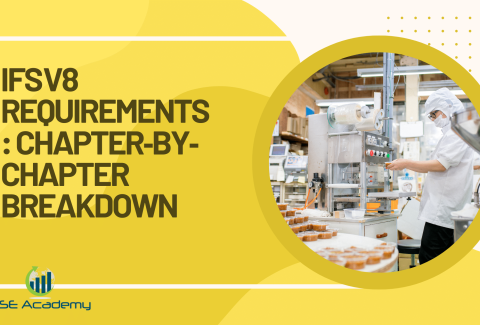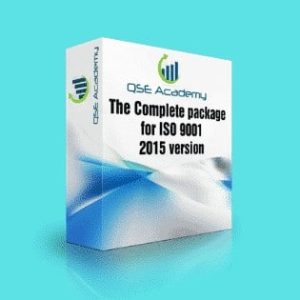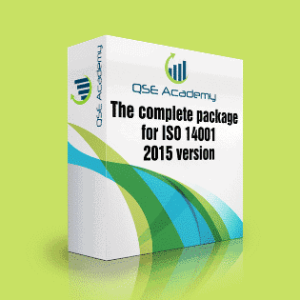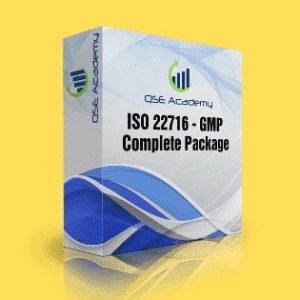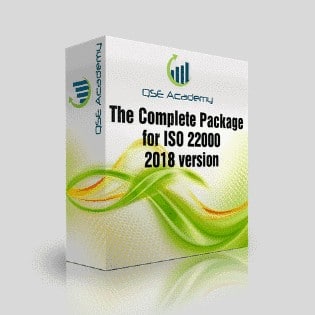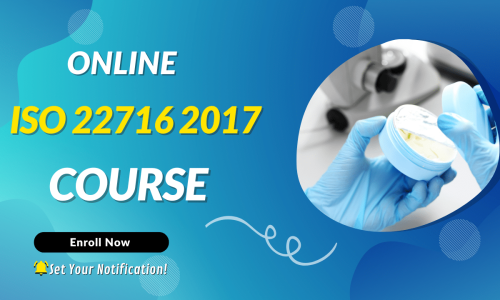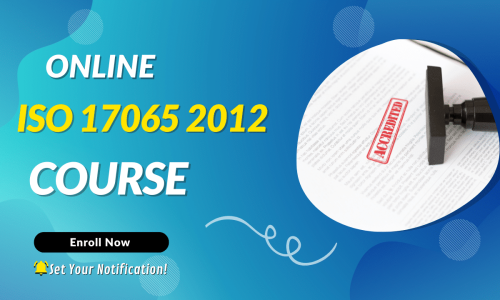Preparing for External Audits under FSSC 22000 Version 6
Last Updated on October 13, 2025 by Hafsa J.
Preparing for External Audits under FSSC 22000 Version 6
If you’re prepping for an external FSSC 22000 audit—especially under Version 6—you’re probably feeling the pressure. And you’re not alone.
I’ve helped all kinds of companies get through audits: from small processors getting certified for the first time to large manufacturers chasing recertification under serious time crunches. I’ve seen everything—from perfectly polished systems to last-minute, duct-tape solutions. And trust me, the audit process under Version 6 isn’t just about checking documents anymore.
Auditors today want more. They want to see how your people work, how your culture supports food safety, and whether your system actually runs smoothly when no one’s watching.
That’s a lot to prepare for. But here’s the good news: you can get ready without scrambling—if you know what to focus on.
In this article, I’ll walk you through exactly how to prepare for your external FSSC 22000 V6 audit. From documentation and mock audits to prepping your team and managing the audit day itself—we’ll break it all down with practical steps, real examples, and insights I’ve learned from doing this in the field.
If you want to walk into your next audit with confidence (and maybe even impress the auditor), you’re in the right place.
Let’s get into it.
What’s Actually New in Version 6 (And Why It Matters)
If you’re already certified under FSSC 22000, you might be wondering, “How different can Version 6 really be?” And if you’re new to the game, the changes might not stand out right away—but trust me, they matter more than they look on paper.
Over the past year, I’ve worked with several clients who assumed the shift from Version 5.1 to Version 6 was just a light refresh. It wasn’t. The changes have real implications for how you prepare, how you train your team, and how you’ll be evaluated during the audit.
Let’s break down what’s new—and why you should care.
1. Food Safety Culture Is Now an Auditable Requirement
That’s right—it’s no longer just something you mention in your mission statement. Auditors will now look at how your company’s values, behaviors, and leadership actually support food safety in daily operations.
That means they’re asking:
-
Does leadership really drive food safety—or just sign off on procedures?
-
Do employees understand why food safety matters to their roles?
-
Are issues raised, heard, and resolved in a way that supports a safety-first culture?
If food safety only comes up during audits or training days, that’s a red flag.
2. More Unannounced Audits (And You’ll Need to Be Ready)
Unannounced audits are now a bigger part of the certification cycle. That means your systems—and your team—need to be audit-ready every day, not just the week before.
I’ve seen companies panic over missing records or an absent QA lead. Version 6 is about consistency, not just best behavior when visitors are around.
3. QR Codes and Certificate Verification
Certificates now come with a QR code that links directly to your audit data on the FSSC portal. That adds transparency—which is great—but it also puts a spotlight on your compliance history.
Translation: if you’ve had major nonconformities or delays, that info is now easier for partners and stakeholders to verify.
4. Audit Duration Adjustments
The new rules bring more clarity (and sometimes longer audit durations) based on your organization’s size, risk level, and complexity. If you’ve had an audit that felt “too fast to be thorough” in the past—expect that to change.
This also means more time for:
-
Interviews
-
Process verification
-
Traceability testing
-
Culture evaluation
Why This All Matters
These updates weren’t made to make your life harder—they’re meant to push food safety systems to reflect real-world performance. And auditors are now trained to dig deeper.
If you’re still preparing for your audit the way you did under Version 5.1, you’re going to miss things. But if you know what to expect—and start building your prep around these changes—you’ll be ahead of the curve.
Fix the Foundation: Your Documentation and Daily Systems
Here’s the truth—most audit issues don’t come from obscure technical failures. They come from gaps between what’s written and what’s actually happening. And under FSSC 22000 Version 6, auditors are trained to spot that disconnect fast.
If your documentation looks perfect but your daily operations tell a different story? That’s where the findings start piling up.
Let’s walk through how to get your documentation and systems aligned and ready.
Start with a Clean, V6-Aligned FSMS
If your Food Safety Management System hasn’t been fully updated to reflect Version 6 requirements, now’s the time. That means:
-
Revisiting your policies and procedures
-
Making sure your documentation reflects real, current practices
-
Integrating food safety culture and risk-based thinking into relevant parts of your system
It’s not just about adding a few buzzwords. It’s about making sure your written system actually supports the way you work.
Check the Big Three: Procedures, PRPs, and Traceability
These are the areas where I see the most trouble during audits:
-
Procedures – Are they up to date? Are people actually following them? Can you prove it?
-
Prerequisite Programs (PRPs) – Cleaning, pest control, maintenance, supplier approval—are these documented and monitored regularly?
-
Traceability – Can you demonstrate a full trace-back and trace-forward in real-time? I’ve seen companies struggle to pull this off under pressure. Practice it in advance.
Real-world tip: One of my clients rehearsed a full traceability drill every quarter. During their actual audit, they nailed it in under 30 minutes—and the auditor literally said, “I wish more companies were this prepared.”
Make Sure Your Records Are Real-Time and Accessible
Auditors don’t want to see records filled out the night before. If your entries all have the same handwriting, pen color, and timestamp—expect questions.
Instead:
-
Keep logs filled out as tasks happen
-
Make sure they’re stored in a way that’s easy to retrieve
-
Review them regularly for completeness and accuracy—not just during audit week
This sounds basic, but I can’t tell you how many audits are derailed by records that are “almost” right.
Use Your Internal Audits to Validate Readiness
Internal audits aren’t just prep tools—they’re practice. If you’re doing them well, you should already know where the weak spots are.
Before your external audit, go back and:
-
Review recent internal audit findings
-
Confirm that corrective actions have been closed
-
Pull together evidence that shows follow-through
Nothing impresses an auditor more than a company that finds its own issues—and fixes them without being told.
Train Your Team Like They’ll Be Interviewed—Because They Will Be
Here’s something I tell every client: The auditor isn’t just here to talk to the QA manager. They’re going to walk the floor, ask questions, and expect that employees—at every level—know their role in food safety.
And no, memorizing the food safety policy won’t cut it.
If your team can’t explain what they do, why they do it, and how it keeps food safe… that’s where findings start to stack up.
Start With Simple, Role-Specific Training
Skip the hour-long PowerPoints. What your team needs is clear, simple guidance on what’s expected of them—and why it matters.
Here’s what that might look like:
-
Line operators understanding how they prevent cross-contamination
-
Warehouse staff explaining how they check incoming goods
-
Sanitation crews describing how cleaning effectiveness is verified
-
Maintenance explaining how they prevent product contact during repairs
Tip: The goal isn’t for everyone to become an auditor. It’s for them to understand how their work fits into the bigger safety system—and to talk about it confidently.
Practice Interview Scenarios—Yes, Really
Auditors don’t expect perfection. But they do expect honesty, awareness, and consistency.
A few example questions your staff might hear:
-
“What do you do if a piece of equipment looks damaged?”
-
“How do you know the area is clean before starting production?”
-
“What would you do if you found a label with missing allergen info?”
-
“Why do you wear this specific color-coded uniform?”
Running short mock interviews before the audit gives your team a chance to hear these kinds of questions before the pressure’s on.
Avoid the Script—Go for Natural Confidence
I once worked with a client who drilled their team so hard on the “right” answers that employees froze when asked a slightly different version of the question.
Don’t over-rehearse. Instead, focus on helping people understand the why behind their work. When that clicks, their answers come naturally.
Bonus: When an operator casually references a cleaning log or explains a CCP in their own words, auditors notice—and it makes a strong impression.
Include Supervisors and Management, Too
Auditors often ask leadership questions like:
-
“How do you support food safety culture?”
-
“How do you ensure corrective actions are completed?”
-
“What do you do with customer complaint data?”
If your leaders can’t speak clearly to those questions, it sends a message: food safety isn’t part of daily decision-making—it’s just a QA thing.
That’s a version 6 red flag.
Run a Mock Audit That Feels Like the Real Thing
If there’s one prep step that separates confident teams from stressed ones, it’s this: they don’t skip the mock audit.
A solid dry run lets you spot gaps, test your team’s readiness, and iron out any communication breakdowns before the real audit begins. But here’s the catch—you have to treat it like it’s real. If it feels too casual, it won’t give you the insight you need.
Simulate the Flow of an Actual Audit
That means blocking off time, assembling the team, and walking through each phase the way an external auditor would.
-
Start with an opening meeting—even if it’s informal
-
Walk the facility, following product flow from receiving to dispatch
-
Interview team members along the way
-
Review documentation and records on the spot
-
End with a debrief, including any findings or recommendations
This doesn’t need to be intimidating. But it should feel structured and serious enough that your team gets a feel for the pace and pressure of the real audit.
Assign Clear Roles Ahead of Time
The day of the audit isn’t the time to figure out who’s doing what. Use your mock audit to test roles like:
-
Audit coordinator – your point person, leading the process
-
Document retriever – someone who knows where everything is and can access it quickly
-
Translator or communicator – if needed, someone who can bridge gaps between technical language and plain speech
-
Support floaters – QA reps or team leads who can jump in with clarification or backup as needed
Tip: Having these roles rehearsed in advance builds confidence and keeps things smooth when you’re under pressure.
Use Internal Audit Results as a Launchpad
Your mock audit shouldn’t ignore what you already know. If your recent internal audits flagged issues, go back and verify that they’re resolved.
Auditors love to see a company that’s self-aware—one that catches and fixes problems before they become findings.
And if your mock audit surfaces new issues? Great. That’s exactly the point. Better to handle them now than during certification.
Make the Debrief Count
After the mock audit:
-
Share what went well
-
Talk openly about weak spots
-
Assign action items to close any gaps
-
Capture it all in a short report—it’ll show auditors you took prep seriously
Field insight: I’ve worked with companies that made their mock audit debrief part of their management review. That kind of integration sends a strong signal that food safety isn’t just a task—it’s embedded in how the business runs.
During the Audit: How to Show Up with Confidence
So the auditor is on-site. You’ve handed over the agenda, the site map is in their hand, and the first few questions start rolling in.
Now what?
This is where many teams get nervous—but they don’t have to. If you’ve prepared well and you stay focused on being honest, consistent, and clear, you’re already in a strong position.
Let’s talk about what actually helps during the audit—and what can quietly sabotage it.
When an auditor asks something like, “How do you verify that sanitation is complete?” they’re not asking for your entire sanitation SOP, the brand of chemical you use, and the last 12 weeks of records—unless they request it.
Just answer the question clearly and confidently.
If they want more detail, they’ll ask for it.
Example:
Auditor: “How do you check that a line is allergen-clean before production starts?”
Operator: “We do an ATP swab and a visual check. The results go on this form, and I sign it before releasing the line.”
That’s clear. It’s concise. It shows knowledge and control.
It’s Okay to Say, “Let Me Check on That”
You don’t need to have every answer memorized. In fact, trying to bluff your way through something can do more harm than good.
If you’re not 100% sure, say something like:
“Good question—I want to give you the most accurate answer. Let me double-check the record or procedure and get back to you.”
That shows professionalism and honesty, not weakness.
Stay Calm If the Auditor Points Out a Problem
At some point, the auditor may flag a concern or ask about something that feels off.
This is your chance to show how your system works—not to get defensive.
The best response in the moment:
-
Listen carefully
-
Ask clarifying questions if needed
-
Take notes
-
Acknowledge the issue, and explain any context or follow-up actions you’ve taken
What not to do: argue, get emotional, or shut down.
Real story:
During an audit I supported, the auditor noticed inconsistent allergen labeling on two similar products. The QA manager didn’t panic. She calmly explained the process, pulled the last few changeover records, and—most importantly—acknowledged that the label approval process had gaps. She even offered a preventive action plan before being asked.
Result? It was noted as a minor finding—not a major one.
Document Everything the Auditor Reviews or Asks For
Keep a simple audit log that captures:
-
What documents were reviewed
-
What areas were walked
-
What questions were asked
-
Any observations or concerns
This helps later when responding to findings or preparing for the next audit cycle. It also shows that you’re organized and proactive.
Support Each Other in the Room
If your QA lead is answering a tough question and another team member can help clarify, step in respectfully. Teamwork during the audit shows that your system isn’t dependent on one person—and that’s a strong message.
Just make sure everyone knows when to speak and when to let others take the lead. No one likes a room full of people talking over each other.
After the Audit: Responding to Findings and Next Steps
So the audit’s over. The auditor has thanked you, maybe handed you a preliminary report, and walked out the door.
Now what?
This is where a lot of teams either breathe a sigh of relief… or scramble to address unexpected findings. Either way, what you do next matters more than you might think. The post-audit phase isn’t just about fixing what went wrong—it’s about showing how serious you are about continuous improvement.
Step 1: Review the Audit Report Carefully
Whether it’s a digital report, a summary during the closing meeting, or a combination of both—go over it in detail with your internal team.
You’re looking for:
-
Major and minor nonconformities
-
Observations or “near misses”
-
Positive comments that reinforce your strengths
-
Any notes on system maturity or cultural gaps
Make sure you understand why something was written the way it was. If anything seems unclear, reach out to the auditor or certification body sooner rather than later.
Step 2: Categorize and Prioritize Findings
Not all findings carry the same weight—but they all need attention.
-
Major nonconformities: These must be addressed with a formal corrective action plan (CAP), often within 30 days. Certification may be on hold until closure.
-
Minor nonconformities: These still need a CAP, but they usually won’t block certification unless ignored.
-
Observations: These are heads-ups. Don’t ignore them—they’re early warnings.
The way you handle even small issues reflects your commitment to food safety.
Step 3: Draft Strong Corrective Action Plans (CAPs)
A great CAP includes:
-
Root cause analysis – What actually caused the issue—not just what went wrong
-
Corrective action – What you’re doing to fix it
-
Preventive action – How you’ll keep it from happening again
-
Owner – Who’s responsible
-
Timeline – When it’ll be done
-
Verification – How you’ll confirm it worked
Pro tip: Don’t rush your root cause analysis. It’s tempting to plug in a quick fix and move on—but shallow analysis leads to repeat issues.
Step 4: Follow Through and Document Everything
Once your CAPs are submitted and accepted, implement them—completely. Don’t leave things half-finished. During your next audit, you may be asked to show:
-
Evidence that the fix worked
-
Records of follow-up checks
-
Training or communication improvements tied to the issue
Auditors love to see closed loops. It shows maturity.
Step 5: Feed It Back Into the System
Here’s where great food safety systems really shine.
Take your findings—and your fixes—and bring them into:
-
Management review discussions
-
Ongoing training programs
-
Updates to SOPs or monitoring protocols
-
Your next internal audit cycle
This tells your auditor (and your leadership team):
“We don’t just react—we learn and improve.”
Pro Tips from the Field: What Experienced Teams Always Do
These aren’t theoretical best practices—they’re habits I’ve seen work in the real world with real teams facing real audits. Whether you’re prepping for your first FSSC 22000 V6 audit or your fifth, these tips can make a measurable difference.
Pro Tip #1: Involve Operations and Maintenance Early
Don’t make the mistake of keeping audit prep siloed within QA. Your operations and maintenance teams play a key role in cleaning verification, GMPs, traceability, and more. Bring them into prep sessions early. It prevents miscommunication and builds system-wide ownership.
Pro Tip #2: Keep a Live “Audit-Ready” Folder Year-Round
Create a centralized digital (or physical) folder that includes:
-
Your updated FSMS overview
-
Most recent internal audit reports
-
List of CCPs and OPRPs
-
Last traceability test results
-
Site map, org chart, and food safety policy
Update it quarterly. That way, when the auditor calls (especially for an unannounced visit), you’re not starting from zero.
Pro Tip #3: Train Staff to Answer in Their Own Words
Auditors aren’t looking for textbook definitions—they want to hear your team’s understanding. When people can explain food safety concepts in everyday language, it shows authentic awareness. That’s a major plus under Version 6’s culture focus.
Pro Tip #4: Rehearse with Leadership, Too
It’s easy to assume that managers “know what to say.” But when auditors start asking about management review, risk assessment, or culture initiatives, some leaders stumble. Practice answering these questions just like you would with line operators.
Pro Tip #5: Conduct a Mini-Audit the Week Before
A short, focused walk-through 5–7 days before the audit helps catch last-minute issues. Use it to:
-
Spot record gaps
-
Check sanitation logs and calibration records
-
Do a quick GMP sweep
-
Interview one or two random staff members
You’d be surprised what this quick review can uncover—and fix—before it becomes a finding.
Common Mistakes and FAQs
Even well-prepared teams can trip up during an FSSC 22000 audit—especially under Version 6. The good news? Most of the issues I see are 100% avoidable. Let’s go over the most common ones and tackle a few frequently asked questions while we’re at it.
Common Mistakes That Can Cost You
Mistake #1: Leaving Preparation Until the Last Two Weeks
I’ve seen teams try to rush prep in the final days before an audit. The result? Incomplete records, confused staff, and avoidable nonconformities.
Fix: Build your prep into your regular food safety calendar—quarterly check-ins go a long way.
Mistake #2: Assuming “Good Enough” Procedures Will Pass
Auditors under Version 6 want to see alignment between your documents and your actual operations. If your procedures haven’t been reviewed since last year—or they don’t reflect the way things really run—you’ll get flagged.
Mistake #3: Keeping Leadership on the Sidelines
Version 6 expects active leadership involvement, especially when it comes to food safety culture. If managers can’t explain how they support the system, that’s a warning sign.
Mistake #4: Over-relying on External Consultants
It’s great to get outside support, but if no one inside your team can explain your system, that’s a red flag. Certification is about ownership, not outsourcing.
Mistake #5: Not Practicing for Staff Interviews
Your people don’t need to memorize scripts—but they should know how to answer basic questions about food safety, hygiene, and their responsibilities. If they freeze or give conflicting answers, it undermines your entire system.
Frequently Asked Questions
Q1: How early should we start preparing for our FSSC 22000 Version 6 audit?
Answer: Ideally, at least three to six months out. That gives you time to update documentation, run a mock audit, close any internal findings, and train your team. If you’ve never been through a V6 audit, err on the earlier side.
Q2: What if we get a major nonconformity—does that mean we fail?
Answer: Not necessarily. You typically have 30 calendar days to respond with a corrective action plan and evidence of implementation. But certification may be put on hold until closure is confirmed, so act fast—and thoroughly.
Q3: Can we disagree with an auditor’s finding?
Answer: Yes. If you believe a finding is inaccurate, you can provide evidence or context to explain your position. If it’s still unresolved, you can appeal through your certification body’s formal dispute process.
Q4: How long does the audit take?
Answer: It depends on your operation’s size, complexity, and product category. A typical initial audit can take two to four days, with annual surveillance audits being a bit shorter. Version 6 has updated rules that may increase audit time for higher-risk facilities.
You Don’t Need to Be Perfect—You Just Need to Be Prepared
Let’s be honest—external audits aren’t easy. They come with pressure, a tight spotlight on your team, and a long list of expectations. And with FSSC 22000 Version 6, the bar has been raised. It’s not just about having a system—it’s about proving that it works, day in and day out.
But here’s the good news: you don’t need to aim for perfection. What auditors really want to see is a company that knows its system, owns its process, and is always looking for ways to improve.
If you’ve:
-
Reviewed and updated your documentation
-
Trained your team to speak confidently about their roles
-
Walked through your facility with a critical eye
-
Practiced traceability drills and mock interviews
-
Prepared your leadership—not just your QA staff
… then you’re in a much stronger position than most.
And if you find a few gaps along the way? That’s normal. The key is how you respond—because that’s what sets strong food safety systems apart.
Final Thought
In my years supporting audit prep across all kinds of operations—from high-volume processors to small specialty producers—I’ve learned that the best outcomes don’t come from cramming. They come from systems that are lived every day.
If you’re preparing for your FSSC 22000 Version 6 audit and want expert support—whether it’s documentation review, staff training, a mock audit, or just someone to walk through your gap areas—QSE Academy is here to help.
Let’s take the pressure off your next audit—and turn it into a moment you and your team can be proud of.
Reach out today to schedule a free consultation or learn more about our FSSC 22000 services.
You’ve got this.
Whether it’s ISO 9001, ISO 22000, or the cosmetics-focused ISO 22716, I’ve spent my career I’m not here to call myself an expert—I prefer “enthusiast” because I truly love what I do. When I’m not writing about standards, you’ll probably find me playing Piano 🎹, connecting with people, or diving into my next big project💫. I’m an engineer specialized in the food and agricultural industry
make ISO standards less intimidating and more approachable for everyone.
turning complex jargon into clear, actionable steps that businesses can actually use.
There’s something incredibly rewarding about helping people navigate food safety and quality management systems
in a way that feels simple, practical, and even enjoyable.
I have a Master’s in QHSE management and over 12 years of experience as a Quality Manager
I’ve helped more than 15 companies implement ISO 9001, ISO 22000, ISO 22716, GMP, and other standards
My clients include food producers, cosmetics manufacturers, laboratories, and service companies
I believe quality systems should be simple, useful, and efficient.




